Sourav Pan
Transcript
Hey everyone! Today we’re diving into the world of Anabaena, a fascinating type of cyanobacteria. Think of it as a tiny, plant-like organism that lives in water.
Anabaena is a genus of filamentous cyanobacteria. Now, that might sound complicated, but let’s break it down step by step.
Let’s look at what Anabaena actually looks like under a microscope. These images show the chain-like structure that makes Anabaena so distinctive.
Notice how Anabaena forms long chains or filaments of connected cells. Each chain is made up of different types of cells working together.
Now, here’s what makes Anabaena really special. It’s not quite a plant, but it does some pretty amazing things, like making its own food through photosynthesis, just like plants do!
The key difference is that Anabaena is actually a prokaryote, meaning it doesn’t have a nucleus like plant cells do. But it can still capture sunlight and convert carbon dioxide into food, just like plants.
Anabaena thrives in aquatic environments – from freshwater lakes and ponds to rice paddies. These tiny organisms play crucial roles in their ecosystems, which we’ll explore in the coming sections.
So remember, Anabaena is a photosynthetic bacterium that forms chains of cells and lives in water. It’s like nature’s tiny green factory, working quietly in aquatic environments around the world.
Anabaena has a fascinating structure that sets it apart from single-celled organisms. Instead of existing as individual cells, Anabaena forms long chains called filaments.
Think of it like a string of beads, where each bead represents an individual cell. These cells connect end-to-end to form long, chain-like structures.
Let’s look at real Anabaena filaments under a microscope. Here you can see the actual chain-like structure with different types of cells.
Each filament contains different types of cells. The regular cells handle photosynthesis, while the clear oval cells are specialized for other functions.
Multiple filaments can come together to form colonies. This filamentous structure gives Anabaena several advantages in aquatic environments.
The filamentous structure provides three key advantages: easier floating in water, better nutrient distribution along the chain, and increased surface area for photosynthesis.
This chain-like organization is what makes Anabaena so successful in aquatic environments, allowing it to form the building blocks for larger colonies and ecosystems.
One of the most remarkable abilities of Anabaena is nitrogen fixation. This process is truly a biological superpower that makes life on Earth possible.
To understand why nitrogen fixation is so important, we need to understand a fundamental problem in nature. Nitrogen is everywhere – it makes up about 78 percent of our atmosphere.
But here’s the problem: most plants and animals cannot use this atmospheric nitrogen gas directly. The nitrogen molecules are held together by very strong bonds that are difficult to break.
Plants need nitrogen in a different form – like ammonia or nitrates – that they can actually absorb and use to build proteins and grow.
This is where Anabaena comes to the rescue! Anabaena has a special enzyme called nitrogenase that can break those strong nitrogen bonds and convert atmospheric nitrogen into ammonia.
The complete chemical reaction shows how Anabaena transforms nitrogen gas and hydrogen into ammonia. This process requires a lot of energy, but Anabaena can do it using the energy from photosynthesis.
This process is like Anabaena making fertilizer for the entire environment! The ammonia it produces can be used directly by plants or converted into other nitrogen compounds that enrich the soil.
Nitrogen fixation by Anabaena is essential for life on Earth. Without organisms like Anabaena converting atmospheric nitrogen into usable forms, most ecosystems would collapse from nitrogen deficiency.
Within Anabaena filaments, there are remarkable specialized cells called heterocysts. These are the nitrogen-fixing factories that make Anabaena so important in aquatic ecosystems.
Look at these clear, oval-shaped structures in the filament. These are heterocysts – they appear different from the regular vegetative cells because they have a specialized structure designed for one crucial job.
Now let’s zoom in and understand what makes heterocysts so special. These cells have evolved a unique structure that solves a critical biological problem.
The most important feature of heterocysts is their thick, protective wall. This wall acts like a barrier that keeps oxygen out of the cell interior.
Inside the heterocyst, we find the enzyme nitrogenase. This is the molecular machine that performs nitrogen fixation, converting atmospheric nitrogen gas into ammonia.
Here’s the critical problem: nitrogenase is extremely sensitive to oxygen. Even small amounts of oxygen will permanently damage this enzyme and stop nitrogen fixation.
The thick wall of the heterocyst creates an oxygen-free environment inside. This allows nitrogenase to work safely and efficiently convert nitrogen gas into ammonia.
Think of heterocysts as specialized factories within the Anabaena filament. Just like a factory needs the right conditions to manufacture products, heterocysts create the perfect environment for nitrogen fixation.
The ammonia produced by heterocysts is then shared with the rest of the filament, providing essential nitrogen nutrients for growth and metabolism. This makes heterocysts absolutely crucial for Anabaena’s survival and ecological role.
Heterocysts represent one of nature’s most elegant solutions to a biochemical challenge – creating an oxygen-free zone within an oxygen-producing organism to enable nitrogen fixation.
Anabaena serves as a foundation species in aquatic ecosystems. Foundation species are organisms that create and maintain the habitat structure that other species depend on for survival.
The nitrogen cycle is fundamental to aquatic ecosystems. Anabaena converts atmospheric nitrogen gas into ammonia, which other organisms can use. This process supports the entire food web by providing essential nutrients.
Anabaena supports multiple levels of the ecosystem. By fixing nitrogen, it enables phytoplankton growth, which feeds zooplankton. This creates a cascade effect supporting fish, aquatic plants, and beneficial bacteria throughout the food web.
The nitrogen fixation process converts atmospheric nitrogen gas into ammonia through a complex biochemical reaction. This ammonia can then be used by plants and other organisms, making Anabaena essential for ecosystem productivity.
Anabaena serves four critical ecosystem roles. As a primary producer, it creates biomass through photosynthesis. As a nutrient recycler, it converts unusable nitrogen into usable forms. It forms the foundation of food webs by supporting other organisms, and acts as an ecosystem stabilizer by maintaining nutrient balance.
Without Anabaena and similar nitrogen-fixing cyanobacteria, many aquatic ecosystems would collapse due to nitrogen limitation. These microscopic organisms truly are the unsung heroes of our planet’s water systems.
One of nature’s most remarkable partnerships exists between Anabaena cyanobacteria and the tiny aquatic fern called Azolla. This symbiotic relationship demonstrates how two completely different organisms can work together for mutual benefit.
Azolla is a small floating fern that covers water surfaces like a green carpet. Inside its tiny leaves are special cavities where Anabaena cyanobacteria live and thrive.
This partnership works beautifully. Azolla provides Anabaena with a protected home and nutrients, while Anabaena converts atmospheric nitrogen into ammonia that feeds the fern. Both organisms benefit from this arrangement.
The nitrogen fixation process is crucial here. Anabaena converts atmospheric nitrogen gas into ammonia using the enzyme nitrogenase, providing essential nutrients that Azolla cannot obtain on its own.
This partnership is especially valuable in rice paddies around the world. Farmers use Azolla as a natural fertilizer, allowing the Anabaena inside to provide nitrogen to rice plants without expensive chemical fertilizers.
The life cycle of this partnership is fascinating. Azolla reproduces and passes Anabaena to the next generation, ensuring the symbiotic relationship continues through time.
This remarkable partnership shows us how cooperation in nature creates solutions that benefit everyone involved. The Anabaena-Azolla relationship is a perfect example of how symbiosis drives innovation in the natural world.
Anabaena’s remarkable nitrogen-fixing ability has made it incredibly valuable in sustainable agriculture. Today we’ll explore how this tiny cyanobacterium is revolutionizing farming as a natural biofertilizer.
Remember, Anabaena converts atmospheric nitrogen gas into ammonia through nitrogen fixation. This process creates plant-available nitrogen that crops desperately need for growth.
This natural nitrogen production makes Anabaena perfect as a biofertilizer. Unlike chemical fertilizers that require energy-intensive manufacturing, Anabaena produces nitrogen naturally using only sunlight and water.
Farmers can introduce Anabaena to their fields in several ways. They can inoculate seeds before planting, add Anabaena cultures directly to soil, or spray liquid preparations containing these beneficial bacteria onto crops.
The benefits of using Anabaena as a biofertilizer are remarkable. It improves soil fertility naturally, reduces dependence on expensive chemical fertilizers, and promotes sustainable farming practices that protect the environment.
A perfect example is rice farming, where Anabaena naturally grows in flooded paddies. The nitrogen it produces feeds the rice plants, reducing the need for synthetic fertilizers while maintaining high crop yields.
Anabaena biofertilizers work by integrating into the natural nitrogen cycle. They fix atmospheric nitrogen, making it available to plants, which then return organic nitrogen to the soil when they decompose, creating a sustainable cycle.
The key takeaway is that Anabaena represents the future of sustainable agriculture. By harnessing nature’s own nitrogen-fixing process, farmers can reduce costs, protect the environment, and maintain productive crops – a true win-win solution.
While Anabaena provides many benefits to ecosystems, there’s an important dark side we need to discuss. Some Anabaena species produce dangerous toxins called cyanotoxins that can harm both humans and animals.
Not all Anabaena cells produce toxins, but when environmental stress occurs, some cells begin manufacturing these dangerous compounds as a defense mechanism against predators and competitors.
These cyanotoxins are released into the surrounding water, creating invisible dangers that can persist for weeks or even months in the environment.
Here’s what cyanotoxin-producing algae can look like in real water bodies. This algae-covered water may appear harmless, but it could contain dangerous levels of cyanotoxins.
Humans and animals can be exposed to cyanotoxins through three main routes: drinking contaminated water, direct skin contact during swimming or bathing, and inhaling water droplets containing the toxins.
The key takeaway is to always exercise caution around water bodies with visible algae growth. Avoid swimming, drinking, or allowing pets to drink from such waters until water quality testing confirms they are safe.
Understanding this dark side of Anabaena helps us appreciate the complex nature of these organisms and the importance of monitoring water quality in our environment.
Anabaena produces two main types of dangerous cyanotoxins that pose serious threats to living organisms. These are anatoxin-a, which targets the nervous system, and microcystins, which damage the liver.
Anatoxin-a is a potent neurotoxin with a complex molecular structure. It interferes with the nervous system by blocking nerve signal transmission, which can lead to muscle paralysis and respiratory failure.
Microcystins are hepatotoxins that specifically target the liver. They work by inhibiting protein phosphatases, leading to liver cell damage and potentially liver cancer with chronic exposure.
Both humans and animals can be exposed to these cyanotoxins through multiple pathways. Drinking contaminated water, recreational activities in affected water bodies, and animals consuming algae-contaminated water are the primary routes of exposure.
Understanding these two major cyanotoxin types is crucial for recognizing the dangers of Anabaena blooms. Anatoxin-a targets the nervous system while microcystins attack the liver, making both extremely dangerous to wildlife, pets, and humans through various exposure routes.
Harmful algal blooms, or HABs, occur when Anabaena and other cyanobacteria multiply rapidly under the right conditions. These blooms can transform healthy aquatic ecosystems into toxic environments.
Several factors can trigger these explosive blooms. Warm temperatures, excess nutrients from fertilizers and waste, and calm water conditions create the perfect storm for rapid Anabaena growth.
When these conditions align, Anabaena cells begin dividing rapidly. What starts as a few scattered filaments quickly becomes a dense mat covering the water surface.
These blooms have devastating environmental effects. They block sunlight from reaching underwater plants, produce dangerous toxins, and consume oxygen as they decompose, creating dead zones where aquatic life cannot survive.
The process often begins with eutrophication, where excess nutrients from human activities fuel explosive algal growth. As these blooms die and decompose, they consume massive amounts of oxygen, suffocating fish and other aquatic organisms.
Harmful algal blooms are becoming a growing global concern. Climate change, increased agricultural runoff, and urban development are making these events more frequent and severe in lakes, rivers, and coastal waters worldwide.
Understanding harmful algal blooms is crucial for protecting our water resources. These events highlight the delicate balance in aquatic ecosystems and the importance of managing nutrient pollution to prevent devastating environmental consequences.
Cyanotoxins produced by Anabaena and other cyanobacteria can cause serious health problems in humans and animals. Understanding these health impacts is crucial for staying safe around potentially contaminated water.
There are three main ways people can be exposed to cyanotoxins. First, by drinking contaminated water. Second, through direct skin contact while swimming or bathing. Third, by breathing in water droplets containing toxins.
Now let’s examine the specific health effects that can result from cyanotoxin exposure, ranging from mild symptoms to serious organ damage.
Health effects from cyanotoxins can be categorized by severity. Mild effects include skin rashes, eye irritation, and allergic reactions that feel like flu symptoms.
Moderate effects involve the digestive and respiratory systems, causing gastroenteritis, breathing problems, nausea, vomiting, and diarrhea.
The most serious effects include liver damage, neurological problems, respiratory failure, and even potential cancer risk from long-term exposure to certain toxins like microcystins.
Given these serious health risks, it’s essential to know how to protect yourself and your family from cyanotoxin exposure.
Here are the key safety guidelines to remember. Avoid any water that has blue-green scum on the surface, smells musty or fishy, has recent algal bloom warnings, or shows dead fish nearby.
Remember the key takeaway: when in doubt about water safety, stay out. It’s always better to be cautious when it comes to potential cyanotoxin exposure.
Scientists use powerful microscopes to identify Anabaena and distinguish it from other microorganisms. Under the microscope, Anabaena has distinctive features that make it recognizable to trained researchers.
The first thing scientists look for is Anabaena’s characteristic filamentous structure. These long chains of connected cells are clearly visible under standard light microscopy.
A closer look reveals individual cells within the filaments. Some cells appear larger and clearer than others – these are the specialized heterocysts that we learned about earlier.
The most detailed view comes from labeled specimens that clearly show the different cell types. Vegetative cells handle photosynthesis, while the larger, clear heterocysts fix nitrogen.
Scientists use different types of microscopy to get the best view. Phase contrast microscopy enhances the contrast between cells and their surroundings, making structures more visible.
Fluorescence microscopy can reveal even more detail. Chlorophyll in the vegetative cells fluoresces red under blue light, while heterocysts appear dark because they lack chlorophyll.
Modern laboratories also use scanning electron microscopy for ultra-high resolution images and artificial intelligence to help automatically identify different species of cyanobacteria.
The key takeaway is that identifying Anabaena requires looking for its signature filamentous structure and the presence of heterocysts. These features, combined with modern microscopy techniques, allow scientists to accurately identify and study this important cyanobacterium.
Traditional algae identification requires expert knowledge and can take hours of careful microscopic examination. Scientists must manually analyze cell shapes, sizes, and arrangements to determine species.
Artificial intelligence is revolutionizing algae identification by analyzing thousands of images in seconds. AI algorithms can recognize patterns and features that distinguish different algae species with remarkable accuracy.
The AI workflow starts with capturing high-resolution images of algae samples. These images are then processed through neural networks that have been trained on thousands of labeled algae specimens.
Here we can see AI in action. This microscopic image shows various algae species with AI-generated bounding boxes and confidence percentages. The system can identify Microcystis and Dolichospermum with over ninety percent accuracy.
AI systems use pattern recognition to analyze key features like cell shape, size, arrangement, and color patterns. Machine learning algorithms compare these features against vast databases of known algae species.
This technology is particularly valuable for monitoring harmful algal blooms. Satellite images and drone footage can be analyzed in real-time to track bloom development and predict potential environmental impacts.
The benefits of AI in algal identification are transformative. Speed increases from hours to seconds, accuracy improves with continuous learning, and the process becomes automated, allowing for widespread monitoring without requiring specialized expertise.
AI-powered algal identification represents the future of environmental monitoring. As these systems continue to learn and improve, they will become even more accurate and capable of detecting new species and environmental changes.
Scientists around the world are conducting exciting new research on Anabaena, uncovering its potential in agriculture, biotechnology, and even space exploration.
Recent studies are examining Anabaena’s metabolomic profile – essentially mapping all the chemical compounds it produces. This research helps us understand how these organisms create valuable nutrients and compounds.
Agricultural researchers are studying how Anabaena enhances plant growth. Studies show it can significantly improve wheat crop yields by providing natural nitrogen fertilization and improving soil health.
Perhaps most exciting is research into using Anabaena for Mars colonization. Scientists have selected Anabaena species PCC 7938 as a model organism for biological In-Situ Resource Utilization, or ISRU, on Mars.
This means Anabaena could help future Mars colonists by producing oxygen, creating biomass for food and materials, and even conditioning Martian soil for agriculture.
Scientists are also exploring Anabaena’s potential in artificial intelligence-based identification systems, wastewater treatment through biosorption, and understanding how it influences mineral precipitation in aquatic environments.
Current research on Anabaena demonstrates its incredible versatility, from improving agriculture on Earth to potentially supporting human life on Mars. These studies continue to reveal new applications and deepen our understanding of this remarkable organism.
Scientists are seriously exploring one of the most ambitious applications of Anabaena cyanobacteria – helping to create sustainable life support systems on Mars. This isn’t science fiction, it’s cutting-edge research happening right now.
Mars presents enormous challenges for human settlement. The atmosphere is mostly carbon dioxide with virtually no oxygen, and there’s no usable nitrogen for plant growth. Traditional life support systems would require constant resupply from Earth.
Enter Anabaena, specifically the strain PCC 7938, which researchers have identified as a model organism for biological In-Situ Resource Utilization, or ISRU. This means using local Martian resources to support human life.
Anabaena’s nitrogen-fixing ability could be revolutionary on Mars. It can take nitrogen gas from the thin Martian atmosphere and convert it into ammonia, creating a usable nitrogen source for growing food crops in Martian greenhouses.
But that’s not all. Through photosynthesis, Anabaena also produces oxygen as a byproduct. While it wouldn’t terraform Mars overnight, it could contribute to local oxygen production in enclosed habitats.
The concept involves growing Anabaena in specialized bioreactors that could be part of a Martian base’s life support system. These hardy cyanobacteria could potentially survive the harsh radiation and temperature fluctuations better than many other organisms.
This research represents the intersection of astrobiology, biotechnology, and space exploration. While we’re still years away from Mars missions, studying how Anabaena could support human life on other planets helps us understand both the potential and limitations of biological life support systems.
The idea of using Anabaena on Mars showcases how understanding Earth’s microorganisms can open doors to incredible possibilities. From fixing nitrogen in rice paddies to potentially supporting human life on Mars, these tiny cyanobacteria continue to amaze scientists with their versatility.
Anabaena’s remarkable abilities extend beyond nitrogen fixation into environmental cleanup. Scientists are discovering that this versatile cyanobacteria can play a crucial role in wastewater treatment and pollution control.
Wastewater treatment is a critical process for protecting our environment and public health. Traditional methods involve multiple stages of physical, chemical, and biological treatment to remove contaminants from sewage and industrial waste.
Now researchers are exploring how Anabaena can enhance these treatment processes. This cyanobacteria has a unique ability to absorb and remove various pollutants from contaminated water through biological processes.
Anabaena can remove various types of pollutants including heavy metals like lead and mercury, pharmaceutical compounds, and organic chemicals. The filamentous structure provides a large surface area for pollutant contact and absorption.
The process works through biosorption, where pollutants bind to the cell surface, and bioaccumulation, where contaminants are taken up and stored within the cells. This makes Anabaena an effective biological filter for contaminated water.
This biological approach to wastewater treatment offers several advantages. It’s environmentally sustainable, cost-effective, and can be integrated with existing treatment systems. Anabaena can even be harvested after treatment, removing the pollutants from the water permanently.
Current research is exploring optimal conditions for Anabaena-based wastewater treatment, including pH levels, temperature, and contact time. This promising technology could revolutionize how we clean our water and protect our environment for future generations.
Anabaena has a fascinating and lesser-known ability that extends beyond nitrogen fixation. These remarkable cyanobacteria can actually cause mineral precipitation, a process that has significant implications for both geology and materials science.
The process begins with mechanical stress applied to Anabaena’s cellular structure. Both vegetative cells and heterocysts experience physical forces that trigger mineral nucleation and growth around the cell surfaces.
When mechanical stress is applied to the cells, it creates nucleation sites where minerals can begin to form. Common minerals that precipitate include calcium carbonate, calcium phosphate, and silica compounds.
The mineral precipitation process occurs in stages. First, stress creates microscopic damage to cell walls. Then, dissolved minerals in the surrounding water begin to accumulate at these sites, gradually building up mineral deposits.
This biomineralization process has important geological implications. Anabaena and similar cyanobacteria may have contributed to ancient mineral formations, helping us understand how certain rock layers and deposits formed millions of years ago.
Beyond geology, this process has exciting applications in materials science. Researchers are exploring how to harness Anabaena’s mineral precipitation ability to develop new biomaterials, coatings, and even self-healing materials.
The key takeaway is that Anabaena’s mineral precipitation ability demonstrates how biological processes can influence geological and materials science. This intersection of biology, geology, and engineering opens new possibilities for sustainable material development and helps us understand Earth’s geological history.
Let’s review the fundamental concepts that make Anabaena such a remarkable organism. We’ll focus on two key ideas: nitrogen fixation and heterocysts.
First, nitrogen fixation. This is the process where atmospheric nitrogen gas is converted into ammonia, a form that living organisms can actually use.
This process is incredibly important because most organisms cannot use nitrogen gas directly from the atmosphere, even though it makes up seventy-eight percent of our air.
Now let’s look at heterocysts, the specialized cells where this nitrogen fixation magic happens in Anabaena.
Heterocysts are larger, specialized cells that appear every ten to fifteen cells along the Anabaena filament. They have thick walls and lack the oxygen-producing photosystem two.
The reason heterocysts lack photosystem two is crucial. Oxygen would destroy the nitrogenase enzyme that fixes nitrogen, so heterocysts create an oxygen-free environment.
Here’s the beautiful cooperation: vegetative cells do photosynthesis and share carbon compounds with heterocysts, while heterocysts fix nitrogen and share it back with the vegetative cells.
These two concepts work together to make Anabaena incredibly important in aquatic ecosystems. The specialized heterocysts enable efficient nitrogen fixation, which supports the entire food web.
Understanding these fundamental concepts helps us appreciate why Anabaena is such a remarkable and ecologically important organism.
Anabaena demonstrates nature’s complexity through two contrasting characteristics. Some species produce dangerous toxins, while others form beneficial partnerships with plants.
First, let’s examine cyanotoxins. These are chemical compounds produced by some Anabaena species as a defense mechanism against animals that might graze on them.
These toxins can cause serious health problems including neurological symptoms, liver damage, and even death in animals. They represent the dangerous side of Anabaena’s survival strategy.
On the beneficial side, Anabaena forms remarkable symbiotic relationships with plants, particularly the aquatic fern Azolla. This partnership demonstrates nature’s cooperative strategies.
In this partnership, Anabaena converts atmospheric nitrogen into ammonia that the plant can use. In return, the plant provides Anabaena with shelter and nutrients. Both organisms benefit from this arrangement.
Understanding these two key concepts helps us appreciate Anabaena’s complex role in nature. The same organism can be both harmful through toxin production and beneficial through symbiotic relationships.
This duality reminds us that in biology, organisms often have multiple strategies for survival, and understanding both aspects is crucial for managing their impact on ecosystems and human health.
The future of Anabaena research is focused on two major trends that could revolutionize agriculture and environmental protection: biofertilizers and bioremediation.
Anabaena-based biofertilizers represent a major shift toward sustainable agriculture. Instead of relying on chemical fertilizers that can harm the environment, farmers are increasingly turning to these natural nitrogen-fixing organisms.
The nitrogen fixation process converts atmospheric nitrogen into ammonia, which plants can readily use. This biological process eliminates the need for energy-intensive chemical fertilizer production.
Bioremediation using Anabaena offers a natural solution for environmental cleanup. These organisms can remove pollutants from water and soil, helping restore contaminated environments.
The process works by utilizing Anabaena’s natural metabolic pathways to break down contaminants and absorb harmful substances, converting polluted environments into clean, healthy ecosystems.
Current research is expanding Anabaena applications in exciting new directions. Scientists are developing AI systems for rapid identification, exploring space applications, and engineering enhanced strains for better performance.
The future looks promising for Anabaena applications. Research shows potential nitrogen fixation rates of 20 to 30 kilograms per hectare per season in rice fields, with possibilities for reducing chemical fertilizer use by up to 50 percent globally.
These trends highlight Anabaena’s potential to address major environmental challenges. From replacing harmful chemical fertilizers to cleaning up pollution, these tiny organisms could play a huge role in creating a more sustainable future.
One of the most remarkable examples of Anabaena’s practical importance is its partnership with Azolla in rice farming. This ancient symbiosis provides a natural, sustainable solution for feeding the world’s most important crop.
Rice paddies are flooded agricultural fields where rice plants grow in standing water. These aquatic environments create perfect conditions for a special partnership between plants and microorganisms.
Azolla is a tiny aquatic fern that floats on the water surface of rice paddies. Inside special cavities in its leaves, Azolla houses colonies of Anabaena bacteria. This creates a living partnership that benefits both organisms.
Here we can see the bright green Azolla ferns covering the water surface between rice plants. This dense green carpet is actually a living nitrogen factory, working around the clock to feed the rice crop.
The partnership works like this: Azolla provides Anabaena with shelter and carbon dioxide. In return, Anabaena converts atmospheric nitrogen into ammonia that Azolla can use for growth. This creates a self-sustaining nitrogen factory.
Anabaena uses the enzyme nitrogenase to convert atmospheric nitrogen gas into ammonia. This process requires significant energy, which is why the partnership with Azolla is so beneficial – Azolla provides the energy while Anabaena provides the nitrogen.
This natural partnership provides tremendous benefits for rice farming. The Azolla-Anabaena system can provide twenty to thirty kilograms of nitrogen per hectare per season, reducing the need for expensive chemical fertilizers while improving soil health and sustainability.
This remarkable example shows how understanding and harnessing natural partnerships can provide sustainable solutions for modern agriculture. The Azolla-Anabaena system has been used for centuries and continues to be an important tool for feeding the world’s growing population.
Scientists and researchers worldwide are studying Anabaena with great interest, recognizing both its tremendous potential and the challenges it presents.
Agricultural experts are particularly excited about Anabaena’s potential as a natural biofertilizer. Research shows it can provide 20 to 30 kilograms of nitrogen per hectare per season in tropical rice fields.
This potential comes from Anabaena’s unique cellular structure, with specialized heterocysts that can convert atmospheric nitrogen into forms plants can use.
Beyond agriculture, experts see tremendous potential in biotechnological applications. Anabaena shows promise for bioremediation, wastewater treatment, and even bioenergy production.
However, experts also emphasize caution. There’s an urgent need for more research into the health risks associated with cyanotoxins that some Anabaena species produce.
Harmful algal blooms like these can produce dangerous toxins, making it crucial to understand both the benefits and risks of Anabaena.
The scientific consensus is clear: Anabaena holds tremendous promise for sustainable agriculture and environmental solutions, but this potential must be balanced with careful research into safety and environmental impacts.
As research continues, experts remain optimistic about Anabaena’s role in addressing global challenges like food security and environmental sustainability, while maintaining vigilance about potential risks.
As we conclude our exploration of Anabaena, we see that this remarkable cyanobacterium embodies the complexity of nature itself – simultaneously beneficial and potentially harmful.
On one side, Anabaena serves as nature’s nitrogen factory, converting atmospheric nitrogen into forms that plants can use. It forms beneficial partnerships with plants like Azolla, acts as a natural biofertilizer, and supports entire aquatic ecosystems.
However, the same organism can produce dangerous cyanotoxins that threaten human and animal health. Harmful algal blooms can devastate aquatic life and contaminate water supplies, reminding us that nature’s power cuts both ways.
Understanding Anabaena means recognizing this duality and learning to manage both its benefits and risks. Through careful monitoring, proper water management, and continued research, we can harness its positive potential while minimizing its dangers.
The future holds exciting possibilities. From using Anabaena as eco-friendly biofertilizers to exploring its potential for Mars colonization, from wastewater treatment to bioenergy production, this ancient organism may help solve modern challenges.
As we’ve learned, Anabaena teaches us that in biology, as in life, complexity is the norm. The same organism that can kill can also heal, the same process that sustains life can also threaten it. Our role is to understand, respect, and wisely manage these natural forces.
Thank you for joining us on this journey through the fascinating world of Anabaena. Remember, every organism, no matter how small, plays a crucial role in the intricate web of life on Earth.
Study Materials
Anabaena - Definition, Structure, Reproduction, Importance
Helpful: 0%
Related Videos
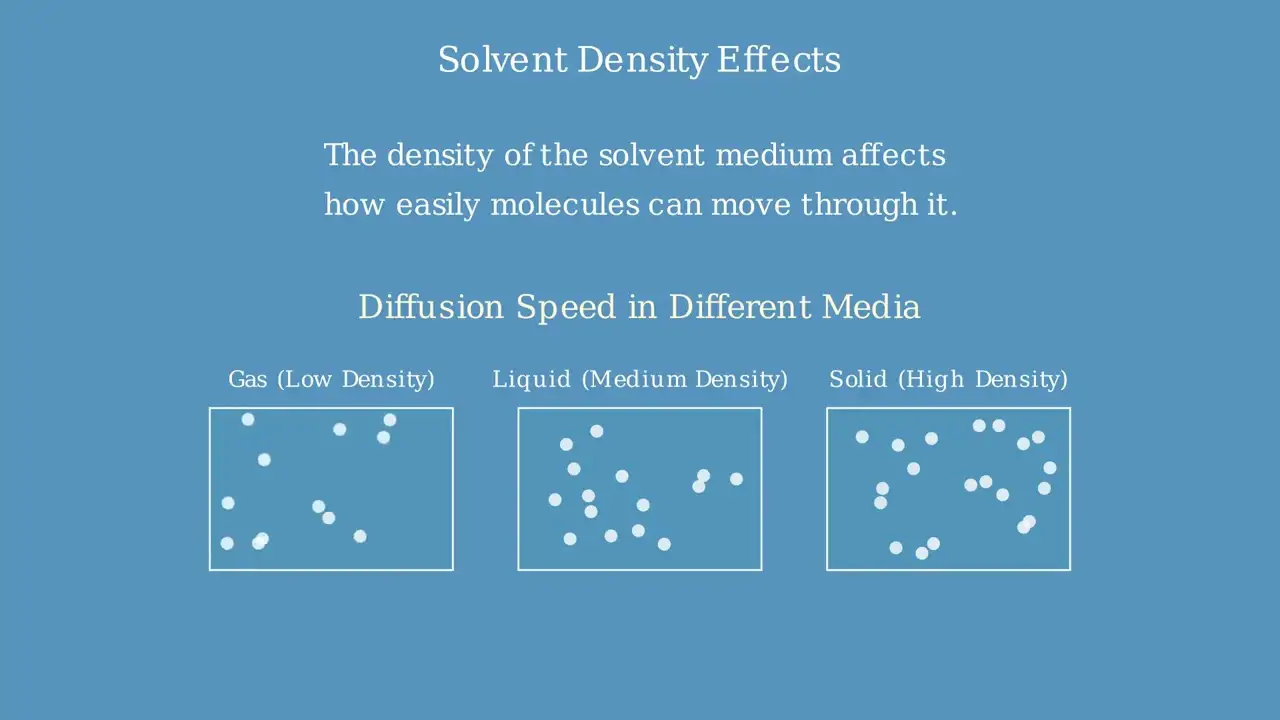

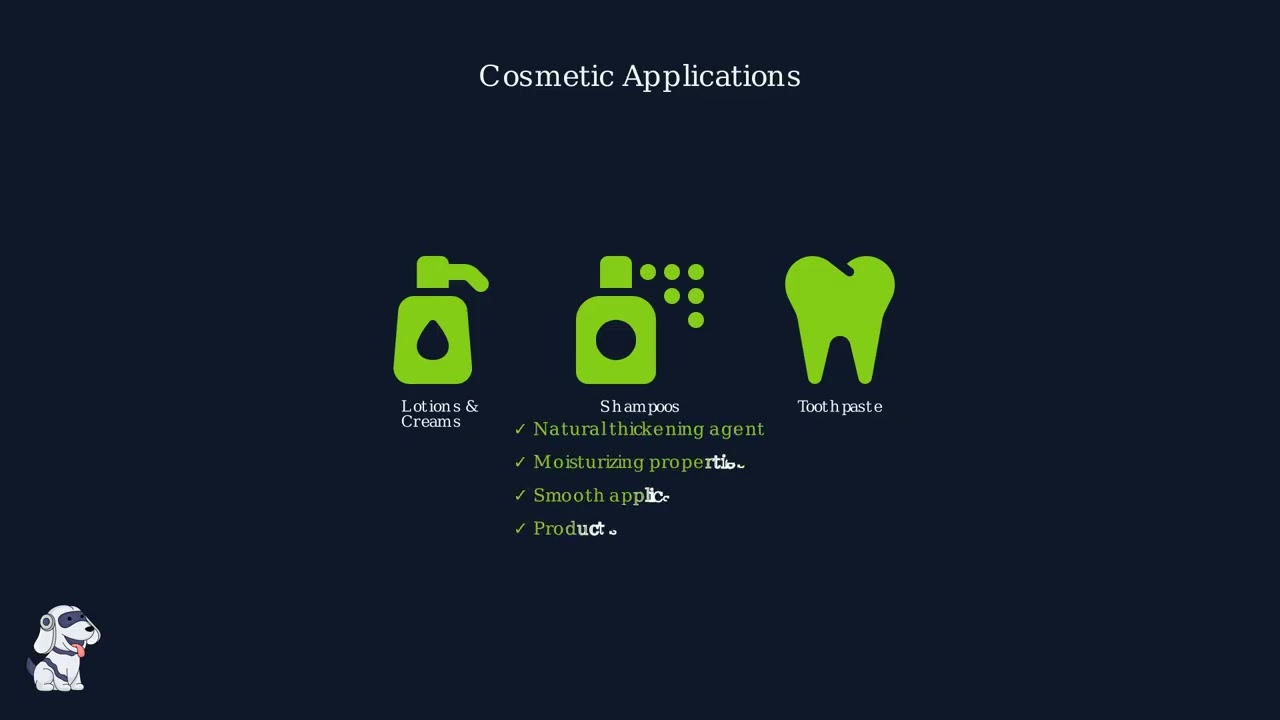


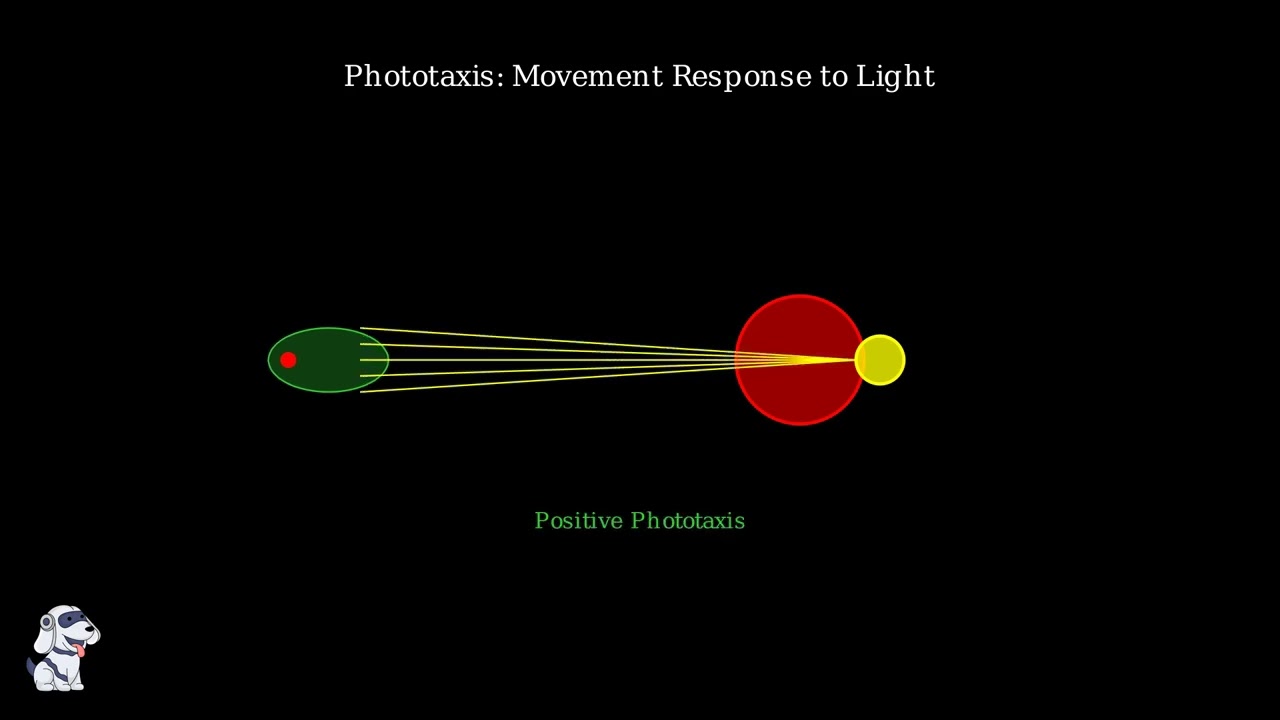
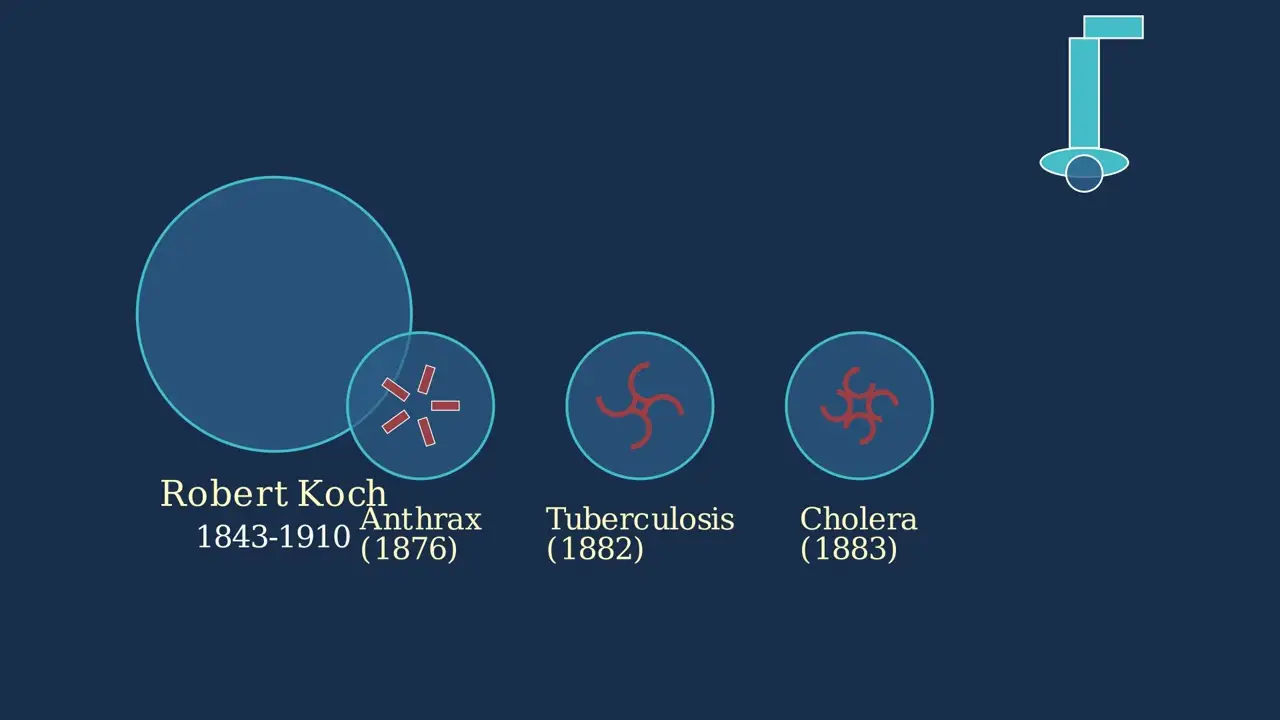
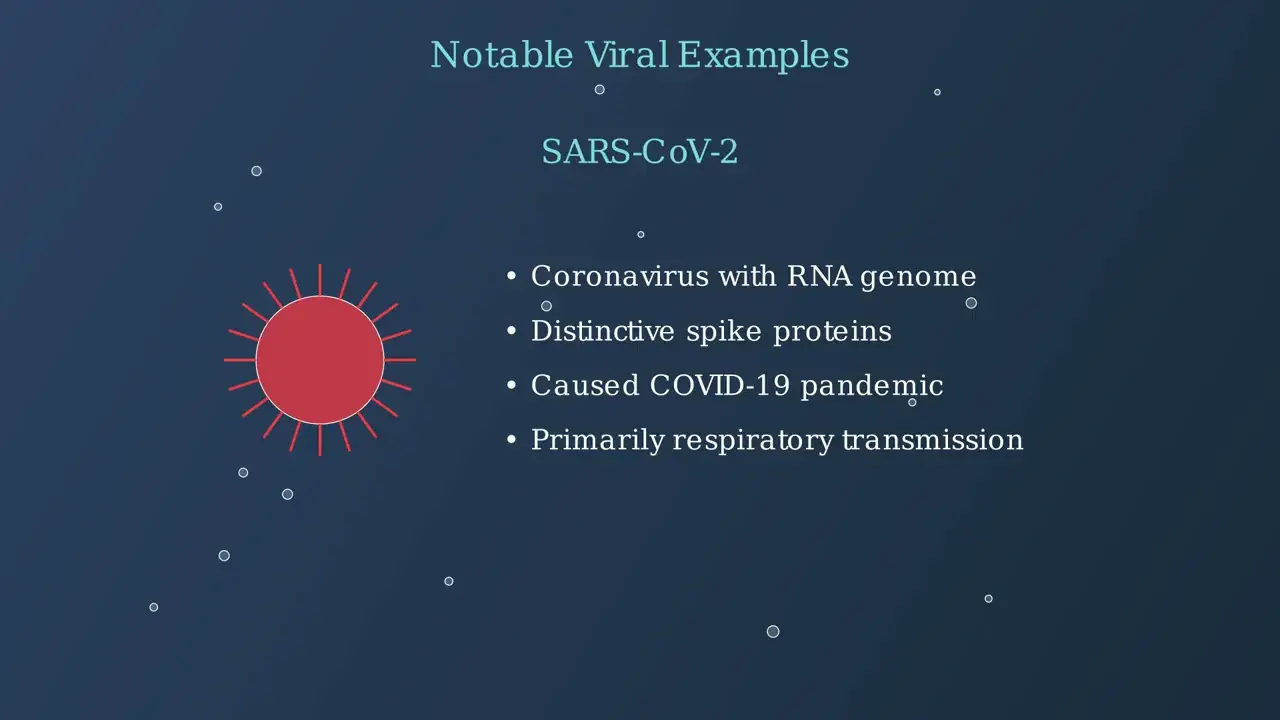

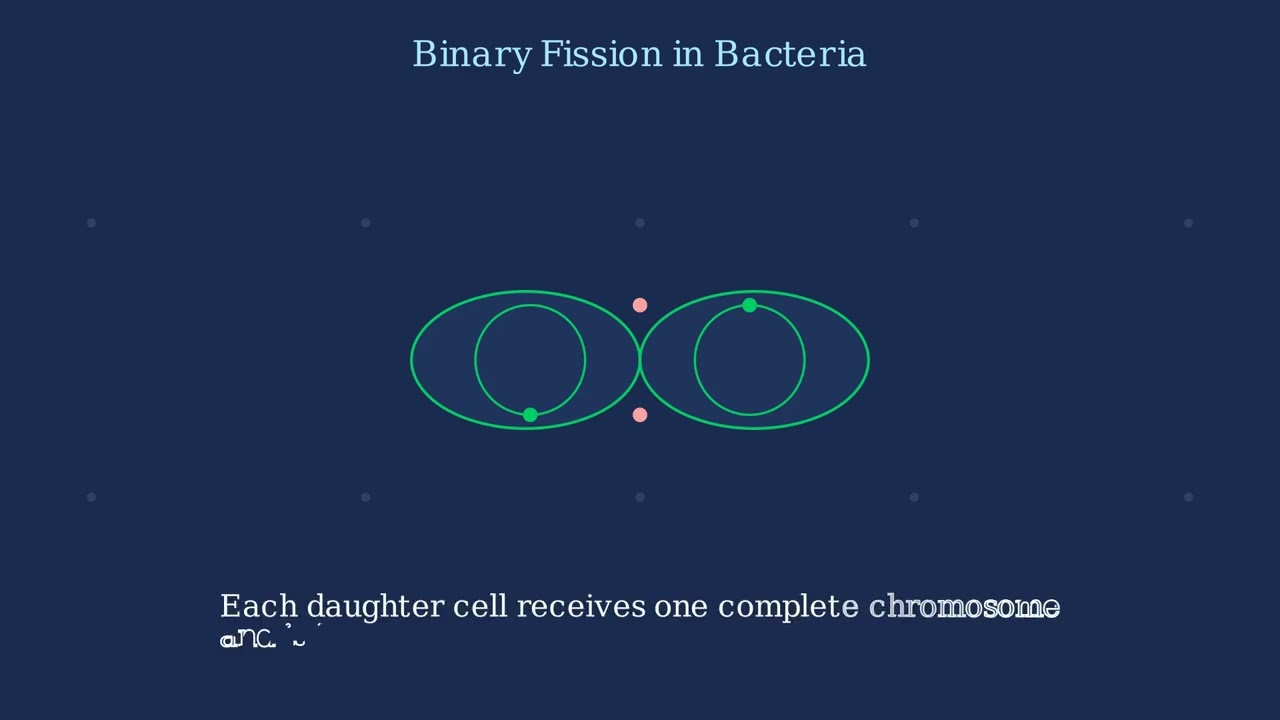
- Text Highlighting: Select any text in the post content to highlight it
- Text Annotation: Select text and add comments with annotations
- Comment Management: Edit or delete your own comments
- Highlight Management: Remove your own highlights
How to use: Simply select any text in the post content above, and you'll see annotation options. Login here or create an account to get started.